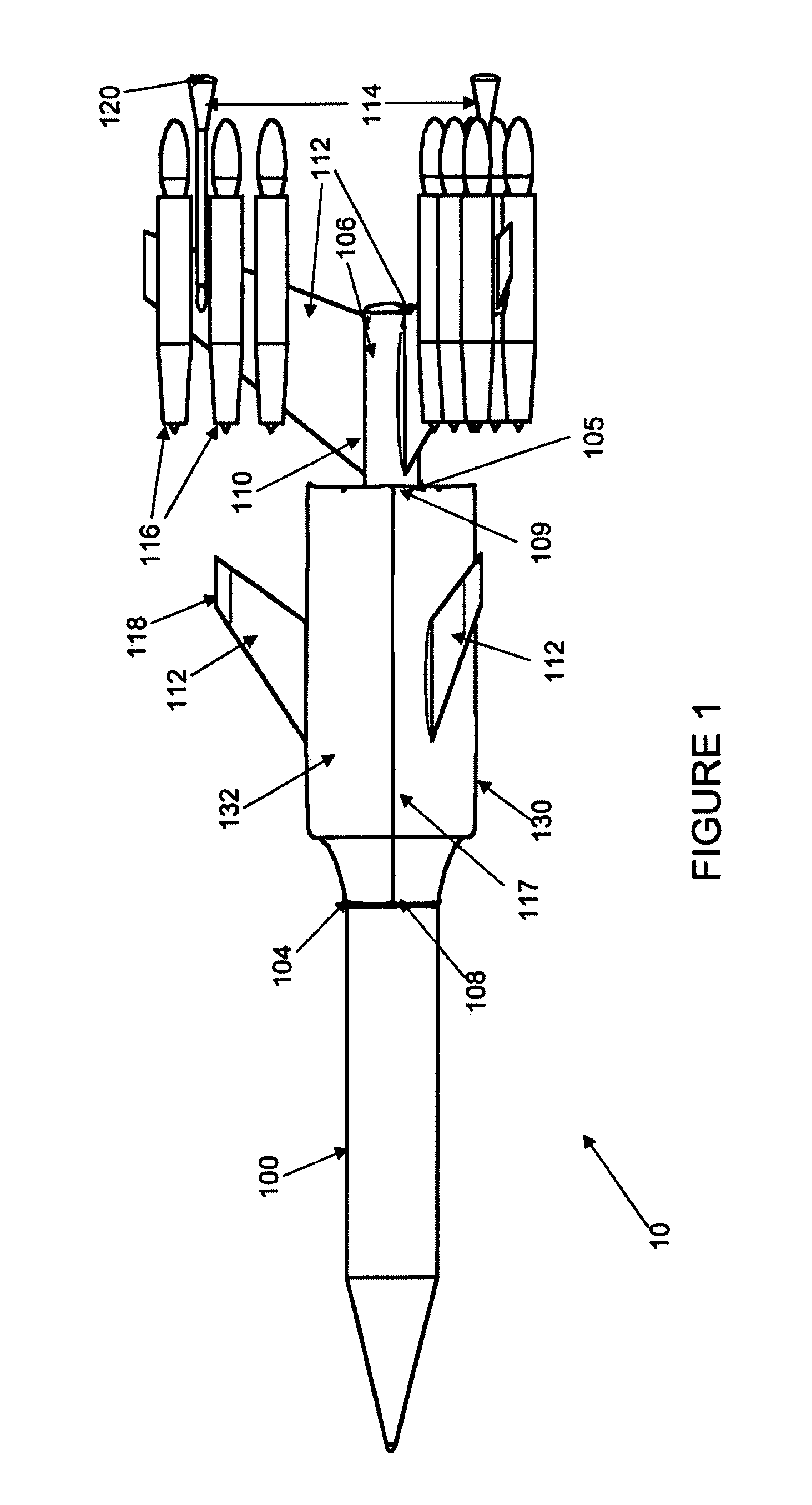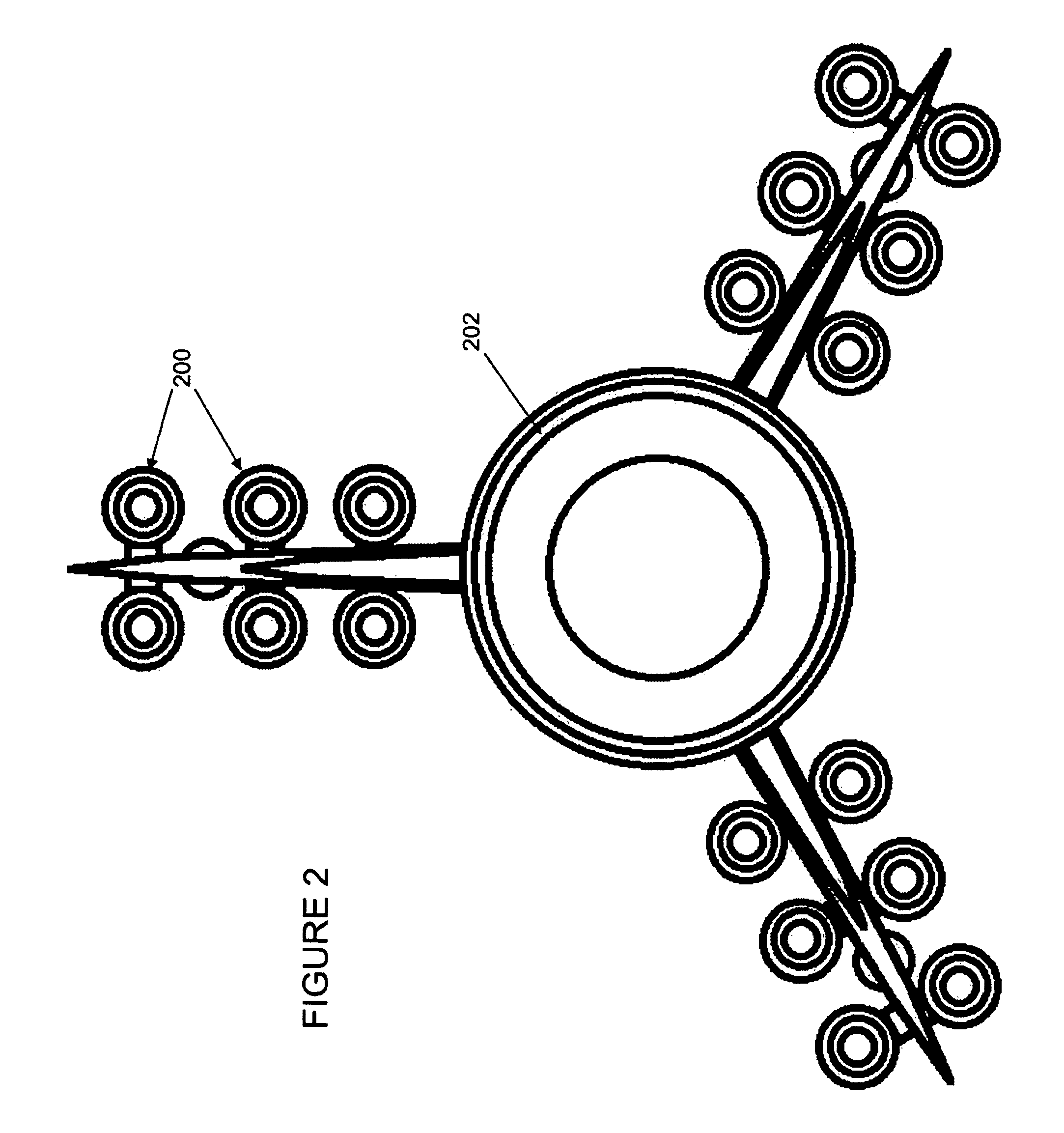Ram booster
a rocket and payload technology, applied in the field of rocket boosters, can solve the problems of large structural mass, limited payload size, and high-speed re-entry tend to require extensive inspection and maintenance, so as to reduce the cost of propelling payloads, reduce the turn-around time and maintenance, and increase the user life
- Summary
- Abstract
- Description
- Claims
- Application Information
AI Technical Summary
Benefits of technology
Problems solved by technology
Method used
Image
Examples
Embodiment Construction
[0025]The present invention is a space launch system and method to propel a payload bearing craft into earth orbit. The invention comprises two or three stages. The upper stage primarily includes rocket engines, propellant tanks, and a payload volume and the upper stage provides the capability of releasably attaching to a lower or middle stage. The lower stage is a reusable booster stage that employs all air breathing engines, is recoverable, and can be turned-around in a short time between missions. Preferably, a middle stage is employed that is a reusable booster stage that also employs all air breathing engines that is also recoverable and can be turned around in a short time between missions. The invention is capable of being practiced using a majority of parts that are currently available “off the shelf” with minor modifications and these parts require significantly less maintenance and preparation between missions than current launch system parts / systems. This results in the a...
PUM
 Login to View More
Login to View More Abstract
Description
Claims
Application Information
 Login to View More
Login to View More - R&D
- Intellectual Property
- Life Sciences
- Materials
- Tech Scout
- Unparalleled Data Quality
- Higher Quality Content
- 60% Fewer Hallucinations
Browse by: Latest US Patents, China's latest patents, Technical Efficacy Thesaurus, Application Domain, Technology Topic, Popular Technical Reports.
© 2025 PatSnap. All rights reserved.Legal|Privacy policy|Modern Slavery Act Transparency Statement|Sitemap|About US| Contact US: help@patsnap.com



